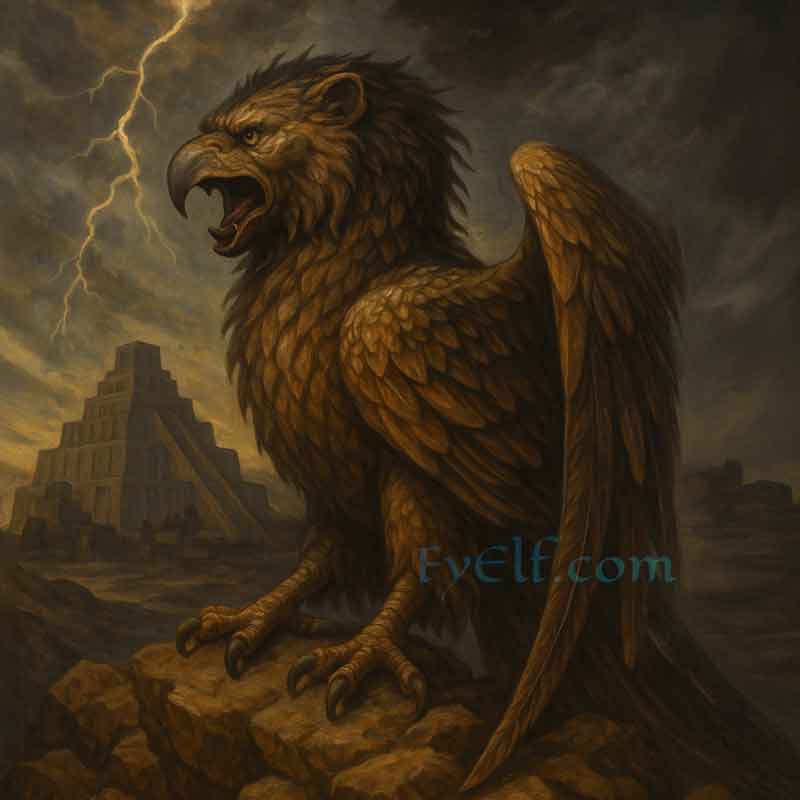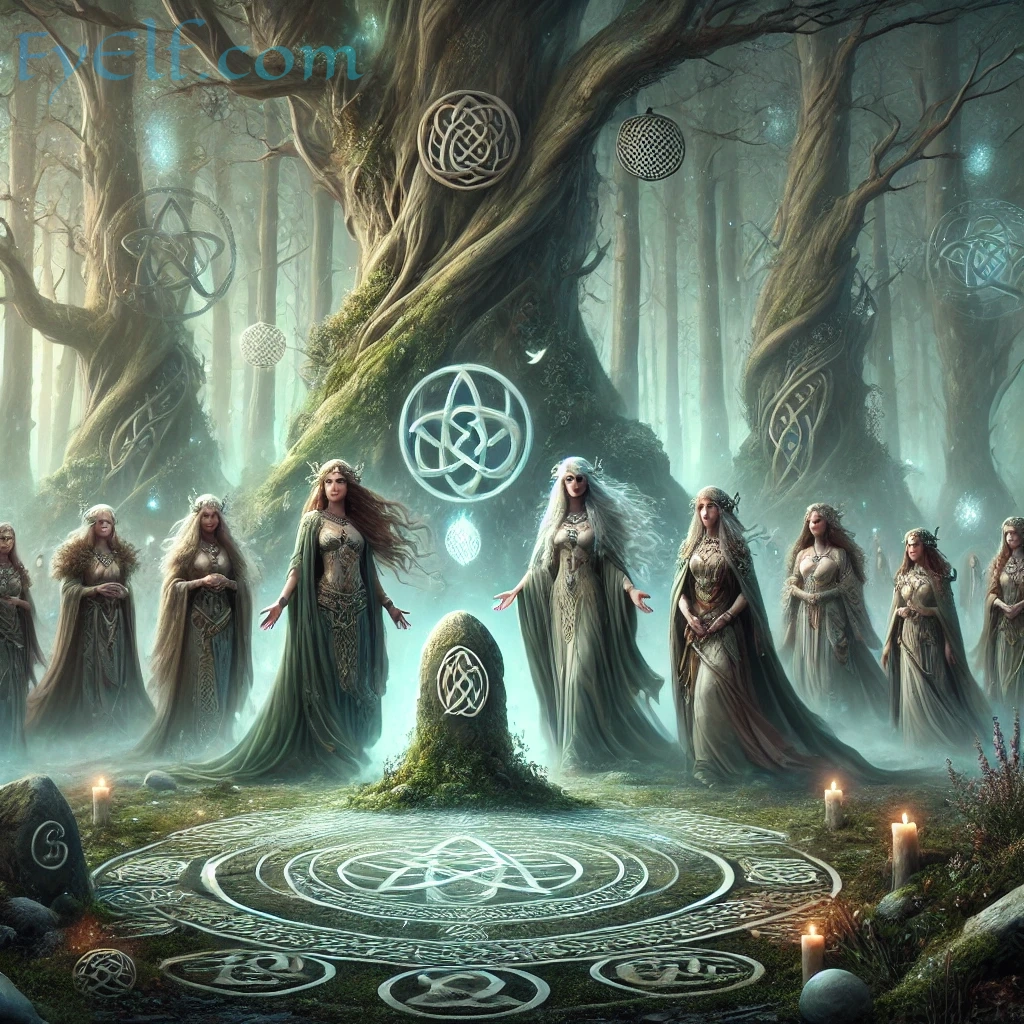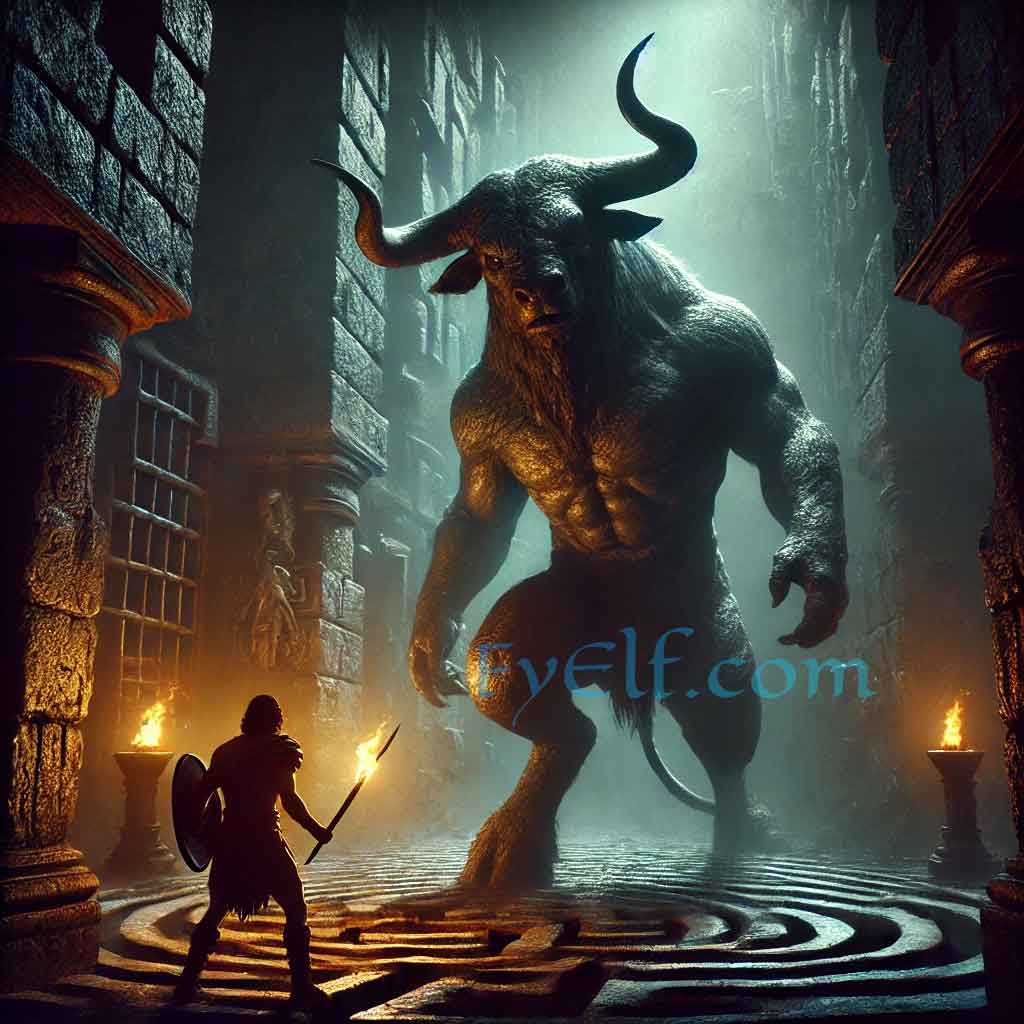The Anzu Bird, sometimes called Imdugud, is one of the most fearsome and enigmatic creatures of Mesopotamian mythology. Depicted as a giant eagle with the head of a lion, Anzu embodies the raw forces of chaos, storms, and rebellion against divine authority. His earliest appearances can be traced to Sumerian myths of the third millennium BCE, later adapted by the Akkadians, Babylonians, and Assyrians.
The lion-headed eagle was not only a terrifying figure but also a sacred symbol. In some depictions, it appears as a protective force, while in others, it is a disruptive power that threatens cosmic order. This dual nature reflects Mesopotamian views of the natural world: unpredictable, awe-inspiring, and deeply intertwined with divine will.
Sumerian and Akkadian Sources
The Anzu Bird appears in Sumerian hymns describing him as a storm-bringer who dwells in the mountains. In Akkadian sources, Anzu takes on a more menacing role, especially in the myth known as the Epic of Anzu (or The Myth of Anzu). Here, Anzu is portrayed as a being who dares to challenge the gods themselves by stealing a sacred object — the Tablet of Destinies.
Anzu in the Epic of Ninurta
One of the most important tales involving Anzu is the Epic of Anzu, preserved in Akkadian texts dating from the Old Babylonian period. The myth centers on the theft of the Tablet of Destinies, a cosmic artifact that grants supreme authority over the universe.
The Theft of the Tablet of Destinies
According to the epic, Anzu serves the sky god Enlil, but his ambition leads him astray. While Enlil bathes, Anzu seizes the Tablet of Destinies, disrupting the divine order. With this artifact in his possession, Anzu gains authority over both gods and humans, threatening the balance of creation itself.
Battle Between Ninurta and Anzu
The gods, alarmed by Anzu’s audacity, search for a champion to retrieve the Tablet. Many hesitate, but the warrior god Ninurta accepts the challenge. Armed with divine weapons and guided by Ea (Enki), the god of wisdom, Ninurta confronts Anzu in a fierce battle. The confrontation symbolizes the eternal conflict between chaos and order.
After a struggle, Ninurta slays Anzu and restores the Tablet of Destinies to Enlil. This act reestablishes cosmic balance, reaffirming divine kingship and the stability of the world.
Lessons of Order vs. Chaos
The myth reflects a deep cultural theme in Mesopotamian thought: no force, however powerful, can disrupt the divine order permanently. Anzu’s rebellion mirrors human fears of disorder — political, natural, or cosmic — while Ninurta’s victory reassures worshippers that the gods maintain control.
Anzu in the Epic of Gilgamesh and Other Myths
Although Anzu plays a central role in his own myth, echoes of his presence appear in other Mesopotamian stories, including the Epic of Gilgamesh. Scholars debate whether the monstrous birds faced by Gilgamesh and Enkidu reflect Anzu’s influence, but the imagery of lion-headed eagles loomed large in Mesopotamian imagination.
Over time, Anzu’s myth was adapted in Babylonian and Assyrian traditions, often used to emphasize themes of divine kingship and the rightful authority of rulers supported by the gods.
The Symbolic Meaning of Anzu
Chaos, Storms, and the Wild Forces of Nature
Anzu is more than just a monster; he embodies the untamed powers of nature. His lion’s head symbolizes predatory strength, while his eagle’s wings evoke the sky, storms, and speed. In this way, Anzu represents the dual awe and terror inspired by thunderstorms, floods, and winds that shaped life in Mesopotamia.
Anzu as a Test for Divine Kingship
By stealing the Tablet of Destinies, Anzu forces the gods to prove their worth. Ninurta’s victory is not just about slaying a monster — it is about demonstrating divine legitimacy. For Mesopotamian kings, this myth had political resonance: just as Ninurta subdued chaos, so must a ruler ensure stability over his realm.
Connections to Other Eagle and Bird Deities
Some scholars suggest Anzu shares mythological DNA with other giant birds across cultures, from the Persian Simurgh to the Indian Garuda. Each represents divine or chaotic power tied to the skies, underscoring a shared human fascination with birds of prey as cosmic symbols.
Artistic Depictions of Anzu
Ancient Mesopotamian Reliefs and Inscriptions
Archaeologists have discovered carvings and cylinder seals depicting lion-headed eagles from Sumerian and Akkadian sites. These images often show Anzu with widespread wings, talons extended, and a fearsome lion’s face.
Lion-Headed Eagle Imagery in Artifacts
The lion-headed eagle motif sometimes served as a protective symbol, appearing on temple walls or sacred objects. This dual use — as both terrifying demon and guardian emblem — reflects the complexity of Mesopotamian spiritual thought.
Influence on Later Mythical Bird Creatures
The imagery of Anzu likely influenced later mythologies. The Ziz of Hebrew tradition, the Roc of Arabian tales, and even European dragon-bird hybrids may all trace echoes back to Mesopotamia’s fascination with hybrid sky beasts.
Anzu and Comparative Mythology
Parallels with the Thunderbird and Garuda
The Anzu Bird shares thematic similarities with the Thunderbird of Native American traditions and the Garuda of Hindu mythology. Each is a massive, storm-linked bird that plays a role in divine struggles between gods, mortals, and chaos.
Anzu vs. Dragons and Other Sky Monsters
Anzu can also be compared with dragons or serpent-like beings of other cultures. Like them, he challenges gods, threatens cosmic order, and is ultimately subdued by a divine champion.
Shared Themes of Chaos Birds Across Cultures
This pattern suggests a universal archetype: the chaos bird, representing untamed forces of destruction and renewal.
Why the Anzu Bird Still Fascinates Us
The story of the Anzu Bird resonates even today. Its themes of rebellion, divine order, and the struggle against chaos remain timeless. Archaeological discoveries and modern scholarship continue to shed light on the myth, while artists and writers reimagine Anzu in new ways.
From fantasy literature to role-playing games, the lion-headed eagle continues to capture the imagination. Anzu is not just an ancient myth — he is a reminder of humanity’s enduring effort to understand the wild forces of nature and our place within the cosmos.




